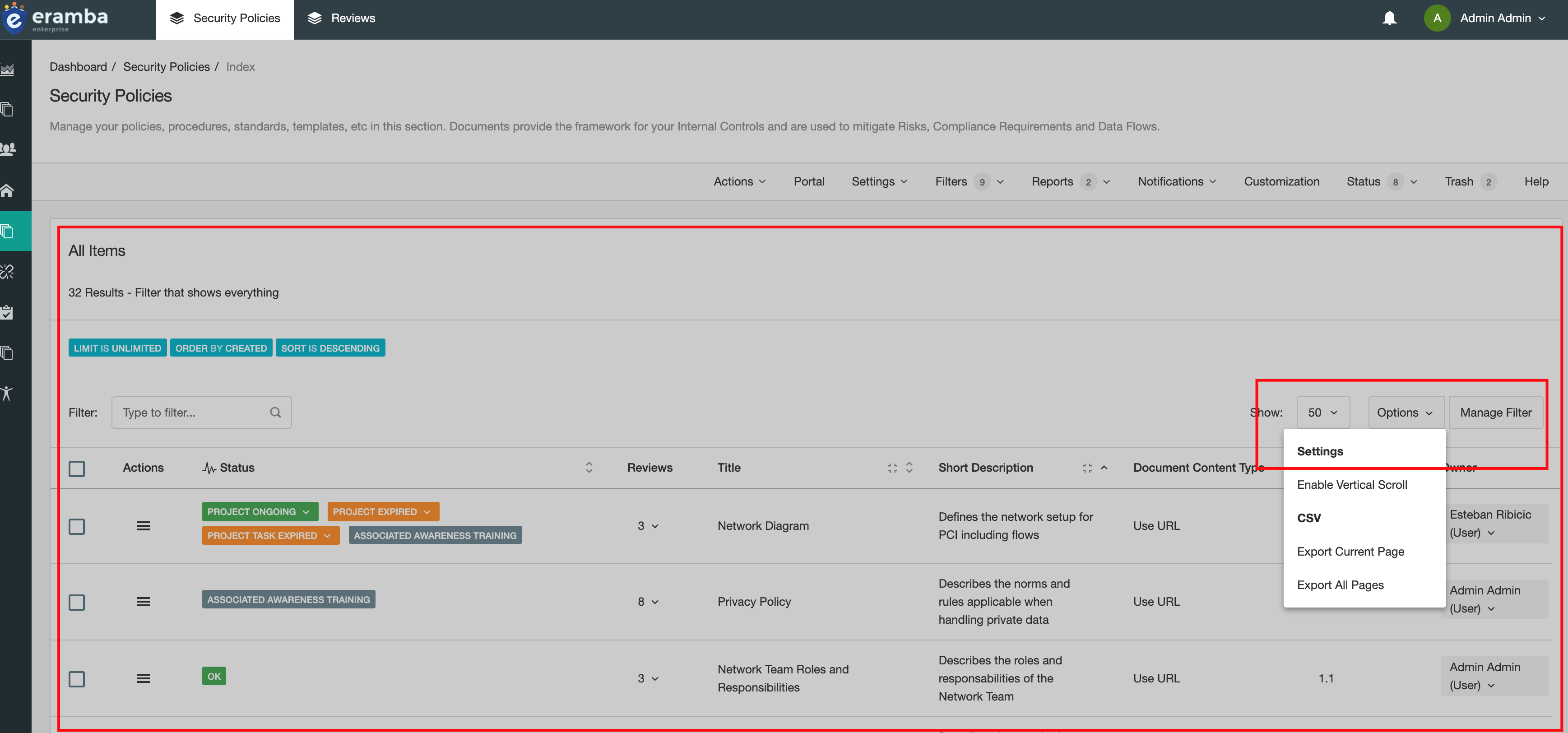Introduction to the User Interface
Learn how the basic user interface in eramba works
Introduction
In this course you will learn the features on eramba's basic user interface. Understanding these key principles is fundamental to making your learning experience simpler.
The key concepts you need to understand are:
- Modules & Tabs (top and left of the screenshot)
- Common Menu Features (red box)
- Common Item Features (green box)
- Filters (blue box)
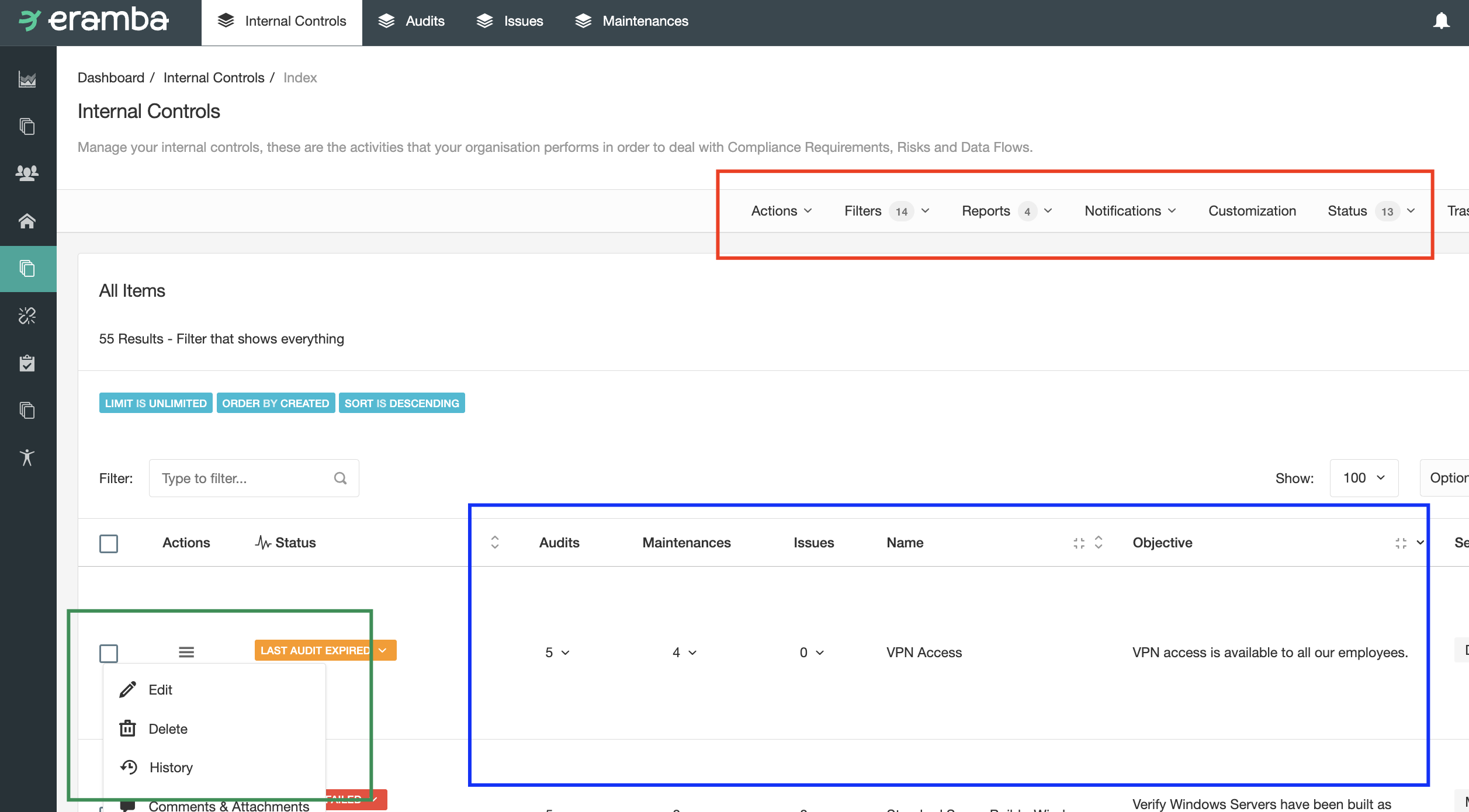
This course links to other courses (Filters, Imports, etc.). Once you complete reading this course please follow the links to complete the additional training in order to have a solid understanding of how the eramba user interface works.
You will get the most out of your use of eramba if you complete the following courses:
These additional courses are relevant to those using CSV data for imports or planning on using the API:
Modules & Tabs
Many of the modules of eramba talk to and depend on each other. The courses in this Learning Platform will explain these relationships in detail.
Modules are listed on the left of the screen. When you access a module you will see that sometimes there are multiple tabs on the top. This means the module, a bit like a spreadsheet, is made of multiple parts where each tab holds specific, related information.
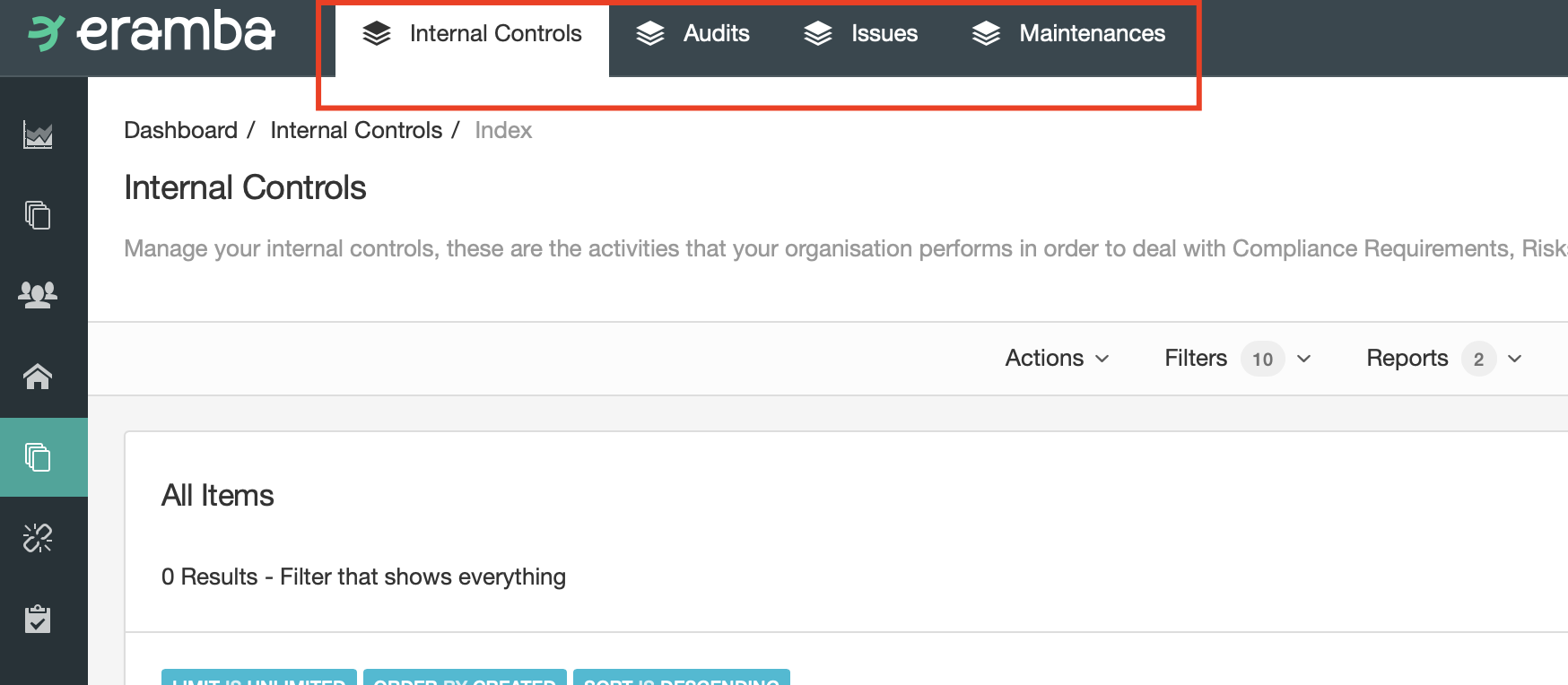
For example, in the Internal Control Module there are four tabs:
- Internal Controls
- Audits: where the audit records that belong to the Internal Controls are stored
- Issues: where the issue records that belong to the Internal Controls are stored
- Maintenance: where the maintenance records that belong to the Internal Controls are stored
Typically the first tab is the "parent" tab and the others act as the "child" tabs. Following the example of the internal control module an Internal Control will have one or more Audits, Maintenance records and Issues.
A number followed by a down arrow icon means that there is a shortcut available, linking to other modules or tabs. For example, in the screenshot below clicking on the down arrow icon will display the "Audit" tab with a filter that will show only the 5 audit records for the control "VPN Access".
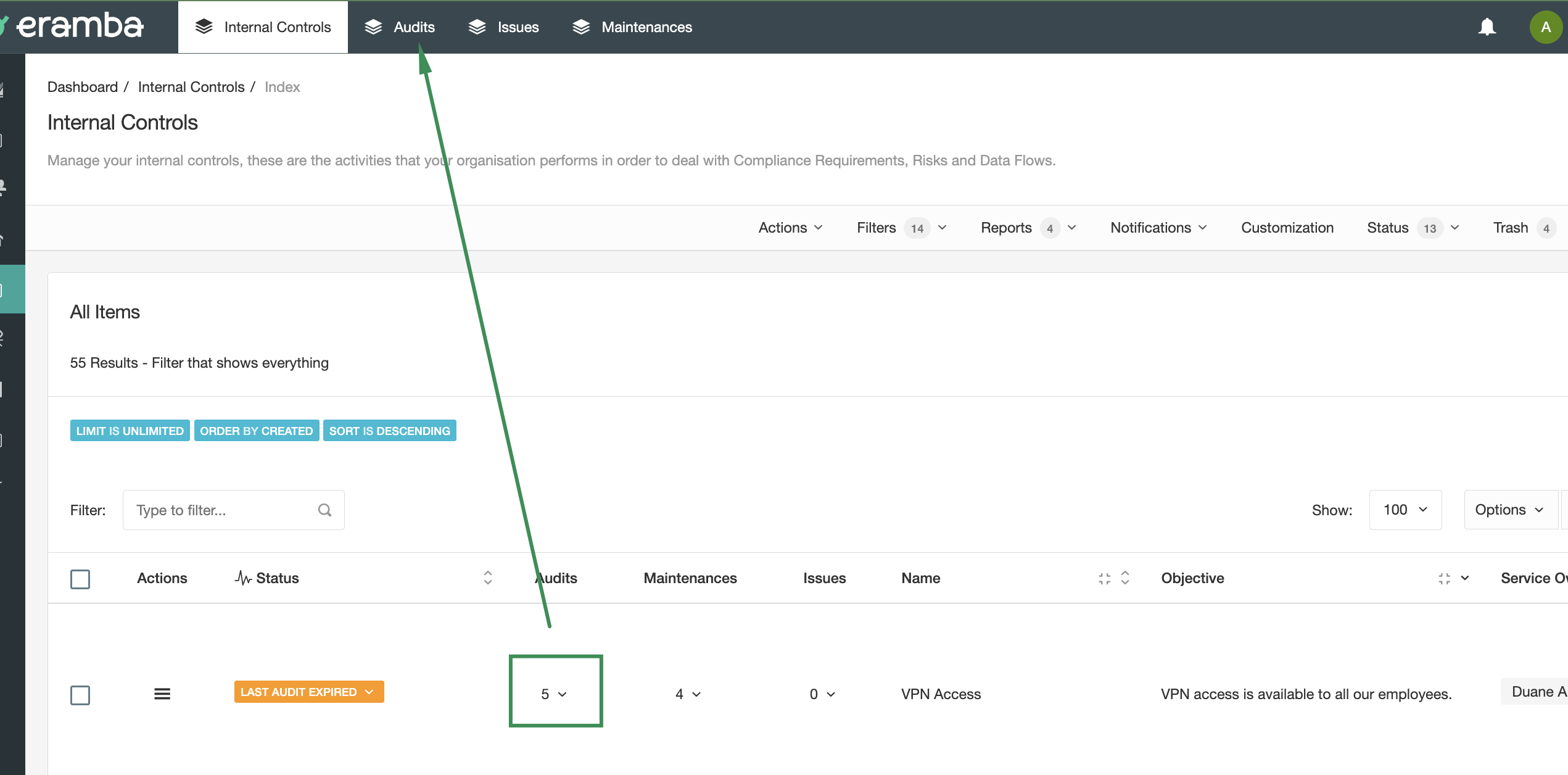
Common Menu Features
On every module and every tab, you will have a menu with the following options:
- Actions: used to create individual items or import items into this tab
- Filters: to search data and display it on the tab
- Reports: to make graphical reports for data in this tab
- Notifications: to trigger notifications on specific events
- Customisation: to customise the module's form
- Status: to define labels for the items on the tab
- Trash: to collect deleted items on the tab
- Help: explains what relationships exist on the module
- API: explains how to query the module using REST calls
We call these functions "Common Features" as they work the same way no matter which tab you are in. Every one of these features has an associated course to complete before you continue with this course.
Common Item Features
Every module has data, sometimes called "items". For example, if you go to the Risk module every Risk shown in there will be an "item".
Every item has a menu of options that can be clicked (the three horizontal stripes next to the item).
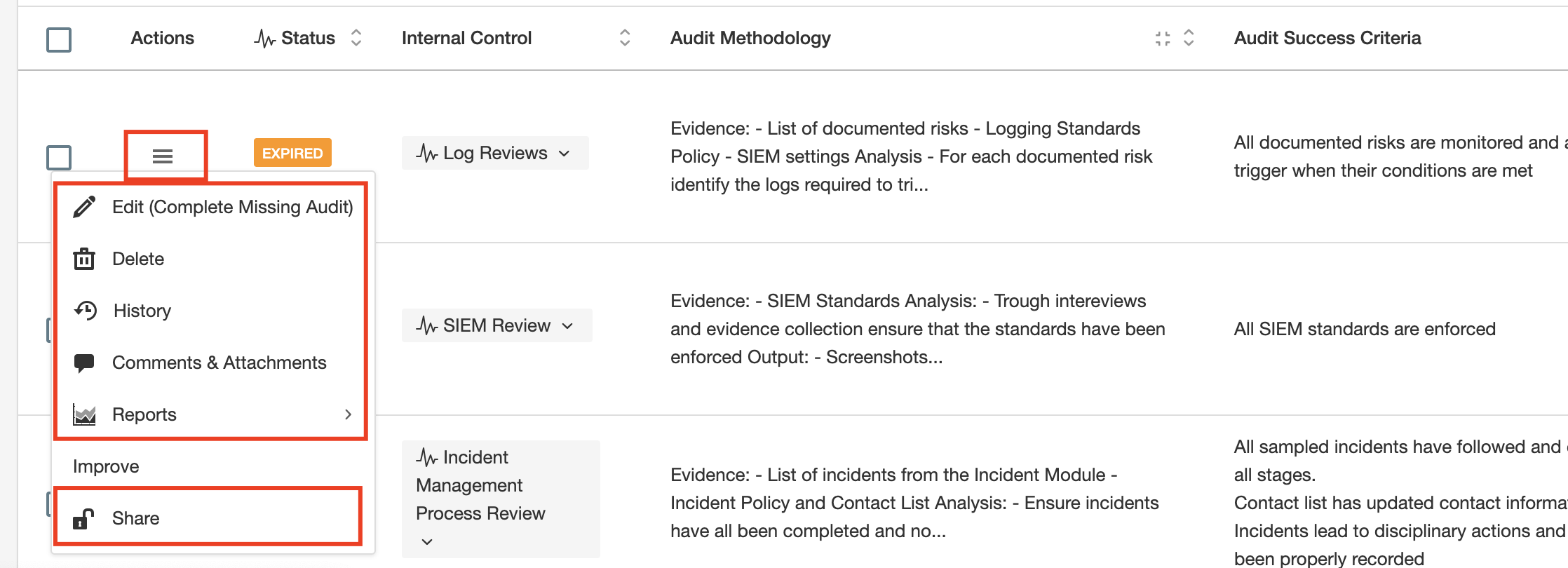
These options will always be available (unless you restrict them using Access Lists) and they provide the following functionality:
- Edit: edit the item
- Delete: deleting things in eramba does not really delete data, it sends it to the "Trash" from where you can restore data anytime
- History: shows the list of changes to the item since it was created
- Comments & attachments: any item can have comments and attachments. This is the way we share feedback on anything in eramba. For example, you will request feedback on audit records from your Network team for the Internal Control "Firewall Reviews".
- Reports: you can access graphical reports that will explain the item in detail
- Share: you can share this item with someone that lacks access to the item because they do not own the item. See visualisations for details.
Filters
Filters are used to display data (risks, controls, etc.) on every tab. The data is shown in a table format made of columns and rows. You can decide which columns to show and which ones to hide. Rows will show every item you have permissions to view.
A set of basic filters is shipped with eramba. These are available on every module. The default filter is "All Items" that allows you to see all items. You can create your own filters with your own conditions. At any time you can export the visible data as a CSV file. You can also schedule reports of filters to be sent to your email.
Filters are very important and there is a dedicated course for them. They are an important feature of eramba that is core to its effective operation.
